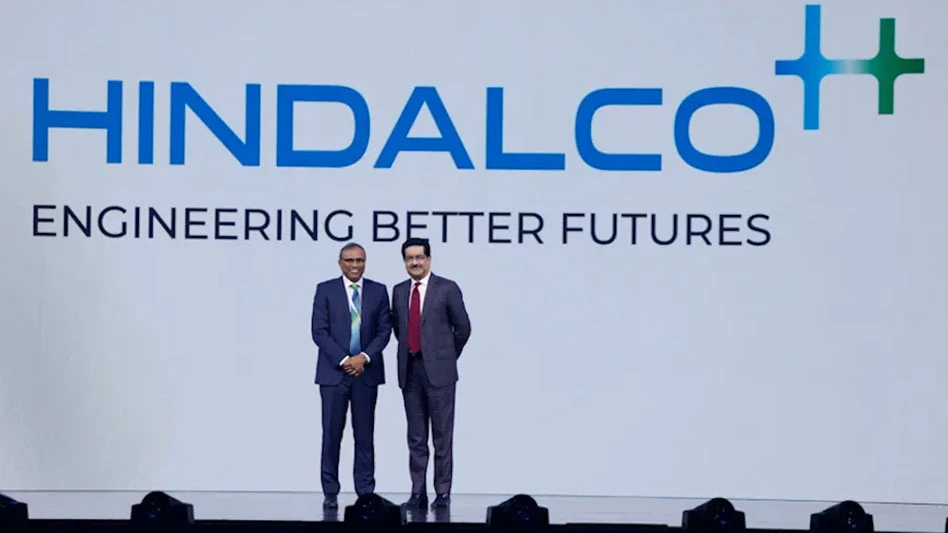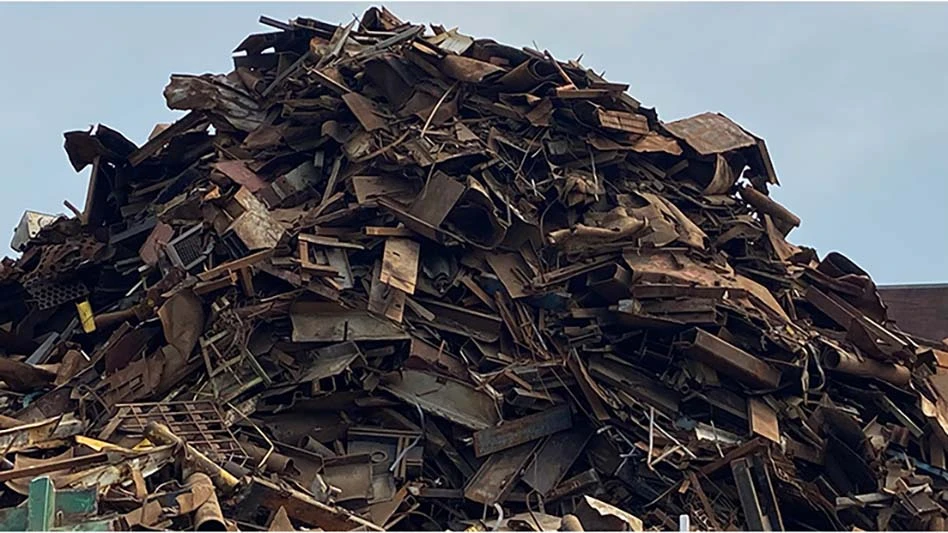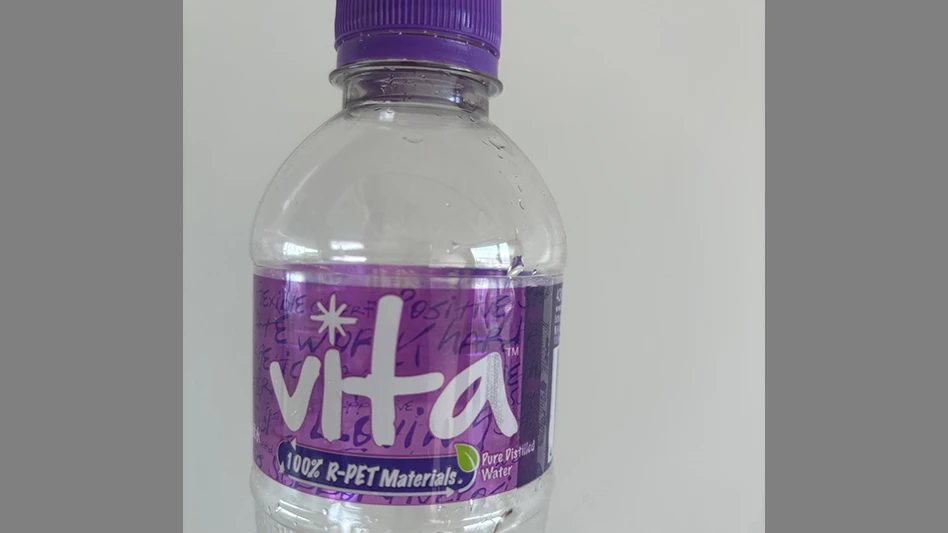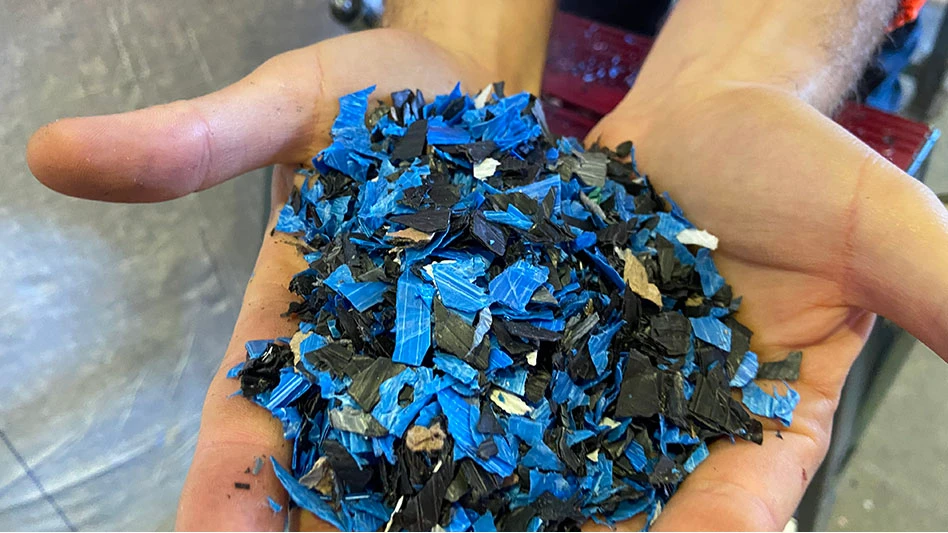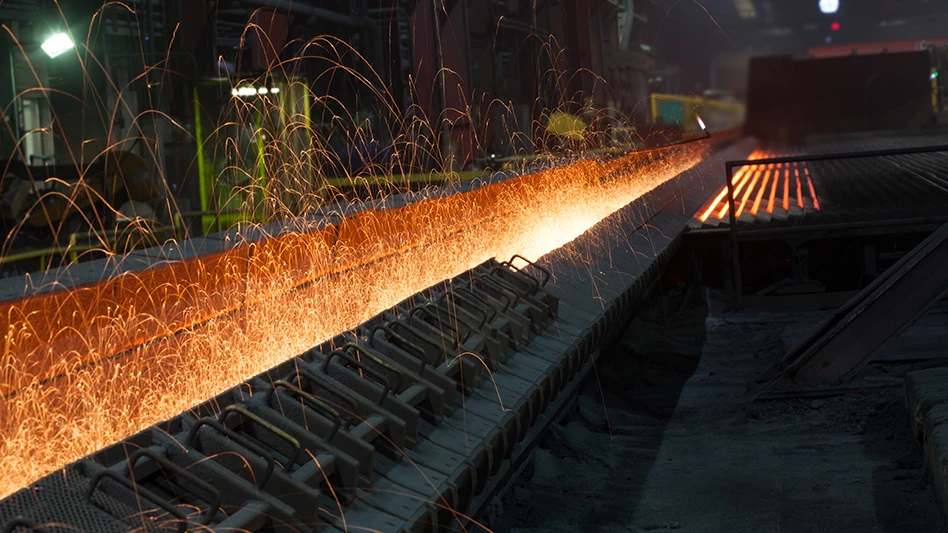
Conventional wisdom says that recycled resin has to be melt-compounded before it can be used to make high-value parts. But AGS Technology Inc., Batavia, Illinois, has built its business on making automotive and other high-value parts from recycled material that has not been compounded in an extruder during the recycling process.
By skipping traditional compounding, AGS reduces the cost of the finished part and eliminates one heat history in the resin, according to A. George Staniulis, vice president of sales and one of the company’s owners.
Another way to look at the AGS process is that the company is adding significant value to recycled resin. AGS continually pushes recycled resin into higher-end applications. Business is good despite pricing challenges caused by lower virgin resin prices.
“Those companies that are adding minimal value to the material are the ones that are really feeling the pressure right now,” Staniulis says.
Not for the faint of heart
Direct injection molding of recycled plastic may not be for everyone. It involves additional upfront costs and steps, but AGS has made it work since 1995.

The idea of formulating the recycled resin during the injection molding process actually came out of the compounding industry. “My partner, Chris Racelis, and I were working for a compounding company in the Chicago area, buying scrap material, incorporating additives and modifiers, then selling the pellets as recycled material that met certain specifications.
“We were having trouble convincing molders that they could use recycled resin and manufacture lower-cost parts without any quality compromises. However, many had objections because of previous problems,” Staniulis says. “Chris and I decided we would become molders, eliminate the extrusion step and produce the finished product ourselves. That’s how AGS started.”
Racelis and Staniulis did not know much about the business aspects of injection molding, but they did understand polymer modification and also were experts in the use of recycled resin.
Staniulis estimates that the raw material accounts for 60 percent to 70 percent of the cost of an injection molded shoot-and-ship part when virgin resin is used. Formulating less expensive recyclate to match the properties of virgin material, plus eliminating the cost of compounding, more than offsets the higher cost of testing and processing.
Step by step
Here is the process:
“We want to always go into a more valuable end product and not be always looking at lower-end applications for our material.” – A. George Staniulis, vice president of sales and co-owner, AGS Technology Inc.
Step 1: AGS buys flake from recyclers who have shredded, washed and cleaned the material. It comes from both post-consumer and post-industrial sources, but Staniulis says the engineered materials AGS needs in the greatest quantities generally come from industrial sources.
The material is visually inspected and assigned a tracking number. It is then mixed in one of two double-cone tumble mixers. One has a 4,000-pound maximum capacity, and the other has a 6,000-pound capacity. AGS generally prefers to work with lots of 5,000 pounds to help isolate any contamination that may be present.
The material is put through a series of aspirators, screens, sifters, magnets and metal separators to remove impurities. The cleaning system was engineered in-house but uses components from Eriez, Erie, Pennsylvania; Bunting Magnetics, Cleveland; Pelletron Corp., Lancaster, Pennsylvania; and Rotex High Performance Screens, Cincinnati, as well as equipment built in-house. “We are always looking for ways to make it better,” Staniulis says. “Recently, we have found a way to get rid of wood and cardboard,” he adds, without giving specifics.
Step 2: The material is tested to AGS’ internal specifications. “We are looking for mechanical strength properties,” Staniulis says. ASTM or ISO specimen bars are molded to be used for testing for five or six properties and to identify impurities that might still be in the material. At this point, AGS has created its own raw material certification data.
Step 3: Once the material meets AGS standards, it is mixed with additives for a specific project. Staniulis calls it “salt-and-pepper” blending to achieve the formula needed.

Step 4: The formulated material is tested again. “This time we are testing it to the customer’s specifications,” he says. At this step, a traditional compounder would put the material through an extruder and make pellets. AGS puts it into an injection molding machine and makes parts, thus saving the cost of extrusions.
Taking care
The process involves significant considerations. For conveying, AGS has taken equipment from other industries. “What we have is from the chemical and some other industries,” Staniulis says. Conveying uniform pellets is a simple process and there is a lot of good equipment on the market that can do that.
“But our regrind has different particle sizes and includes some powders we have added,” he says. “We blend in a functional tacky substance that allows the powders and the particles to be uniformly distributed without settling to the bottom.”
Special care has to be taken in drying the flake because a longer residence time in the dryer is required to accommodate the varying flake size. “Because of that, we need larger dryers. Our biggest one holds 8,000 pounds,” Staniulis says. The dryers are from Conair Group and AEC Whitlock.

AGS designs its own mixing screws for the molding machines and has them built by suppliers such as Nordson Xaloy Inc. and Concor Tool and Machine Inc. The mixing screws, which have been worked out over years of processing, are a low-intensity, distributive design that homogenize the material but do not degrade fillers, such as glass fibers. Mixing screws have a long length-to-diameter (L:D) ratio for uniform distribution.
AGS buys blank nozzle filters and machines them to its own design, which includes restrictions that material has to flow over and through that will trap anything hard, such as metal or plastic that did not melt.
Staniulis says that good mold design is important to the AGS process. “Recycled material does not lend itself to tools [molds] that have been built with shortcuts. It is more problematic to run,” he says. “We might have to do additional cleaning of the tool because of the buildup of tar and residue, which is more common with recycled materials.”
Processing formulated regrind is more difficult, however Staniulis says AGS has learned that precautions and good practices on the front end pay off. “You have to take care of contamination and variations from lot to lot on the front end,” he says. “Hopefully you are saving 25 cents per pound on the material versus the cost of virgin material and putting in only 5 cents of additional processing costs.”
Key to the AGS business model is reversing the traditional cascading approach to recycling. This approach assumes that the scrap from an aerospace part has to go into an automotive part. Scrap from the automotive part has to go into a construction part and so on. The value of the material has decreased with each application.
“We were having trouble convincing molders that they could use recycled resin and manufacture lower-cost parts without any quality compromises. However, many had objections because of previous problems.” – A. George Staniulis, vice president of sales and co-owner, AGS Technology Inc.
“We want to always go into a more valuable end product and not be always looking at lower-end applications for our material,” Staniulis says.
By the numbers
AGS has sales of approximately $10 million per year, with about 70 percent of that using regrind and the rest using virgin resin. More than 70 percent of the parts made from regrind are automotive, such as an interior substrate for a Ford SUV made from the AGS impact-modified polycarbonate (PC) or a door grip substrate made from AGS 30 percent glass-fiber-reinforced polypropylene (PP). General Motors Corp. is a longtime customer and in 2014 awarded AGS its Platinum Supplier Status and a Supplier Quality Excellence Award.
Nine AGS formulated regrind materials, which go by the name Injectoblend, have been approved by General Motors, while eight have been approved by Chrysler and one by Ford. AGS has more than 100 Injectoblend formulas. AGS added a JSW 500-ton all-electric injection molding press in June and expects to take delivery of a 310-ton all-electric JSW in September, bringing its total number of presses to 15. The list includes four Mitsubishi and one Toshiba press. The rest are JSW models. Sizes range from 80 tons to 720 tons of clamping force.
The two new all-electric JSW models were chosen because of their low operating cost and good repeatability, Staniulis says. Additional presses are being considered.

Explore the October 2016 Plastics Recycling Magazine Issue
Check out more from this issue and find your next story to read.
Latest from Recycling Today
- Toyota opens ‘circular factory’ in UK
- Agilyx works with former Plastic Energy CEO on sourcing venture
- Two factors raise ferrous export questions in April
- Analyst: Scrap imbalance lost amid copper’s critical status
- AF&PA report shows decrease in packaging paper shipments
- GreenMantra names new CEO
- Agilyx says Styrenyx technology reduces carbon footprint in styrene production
- SABIC’s Trucircle PE used for greenhouse roofing

